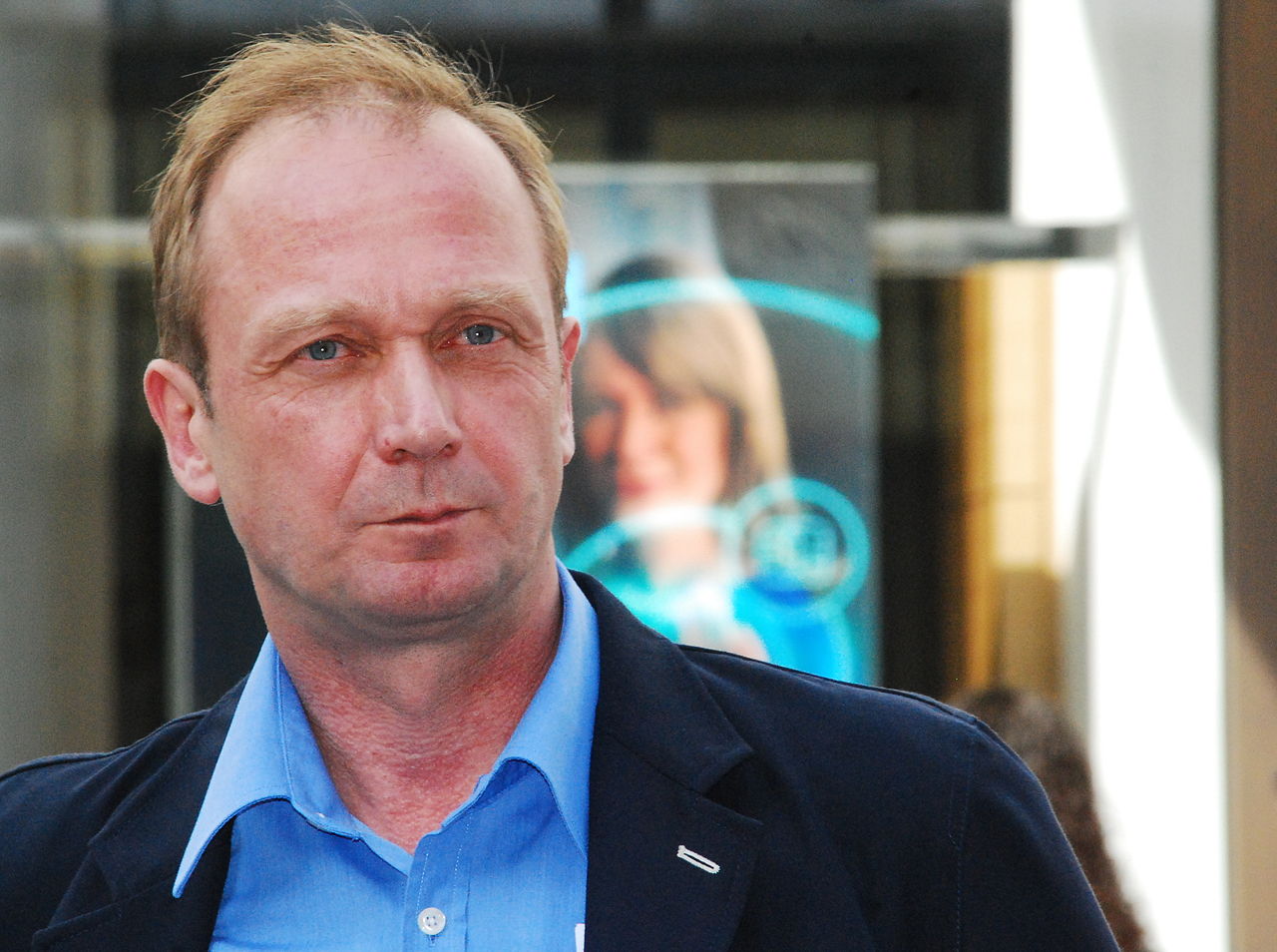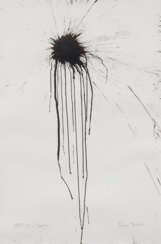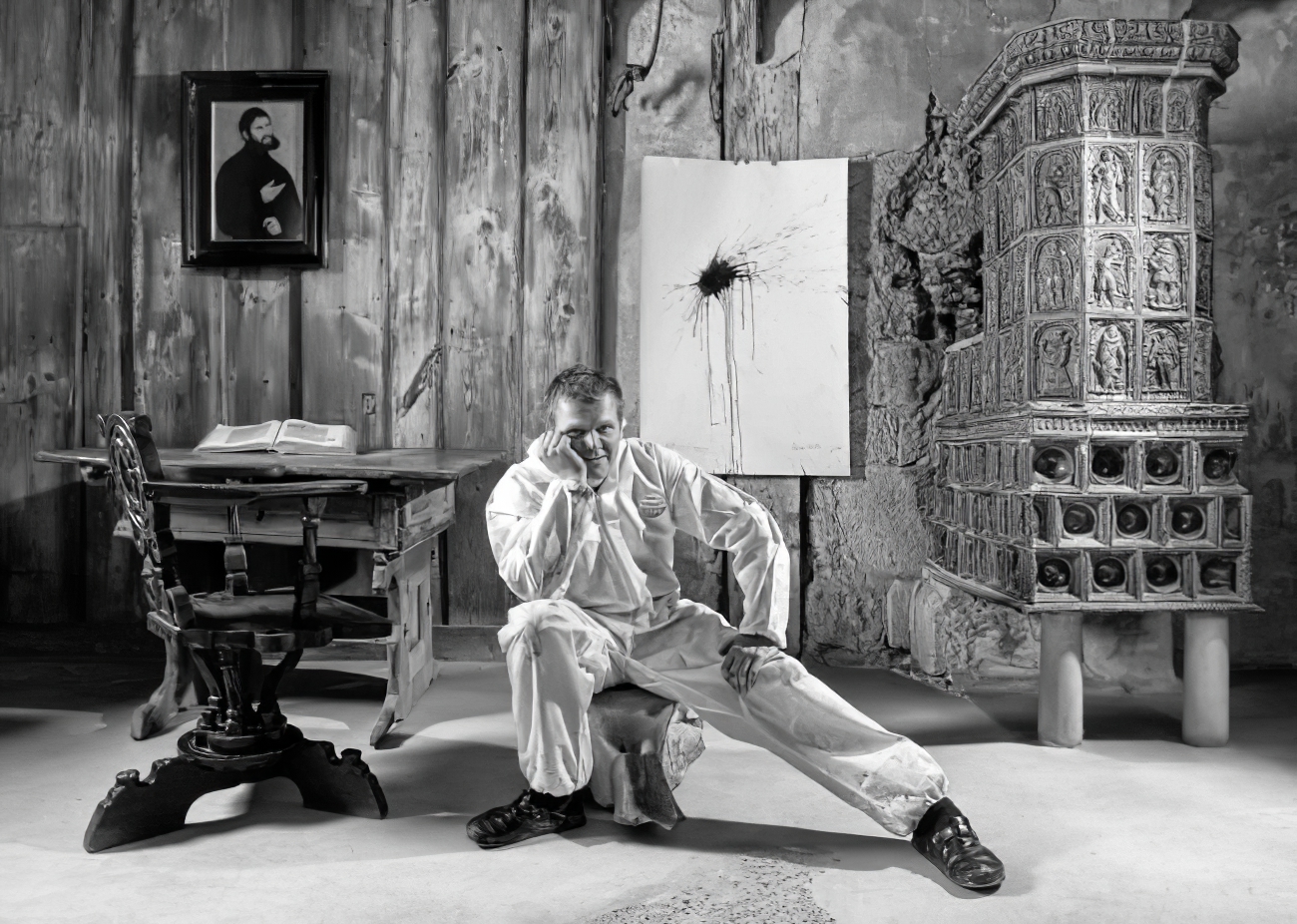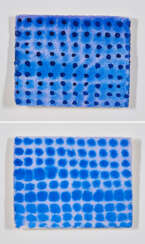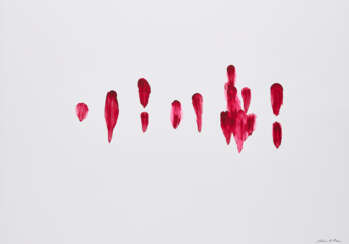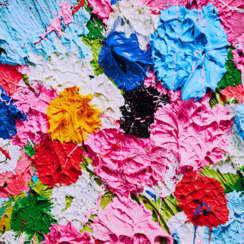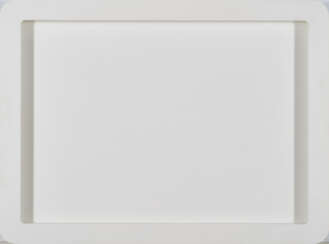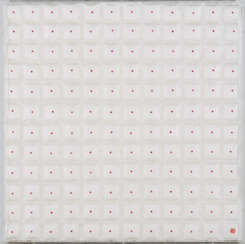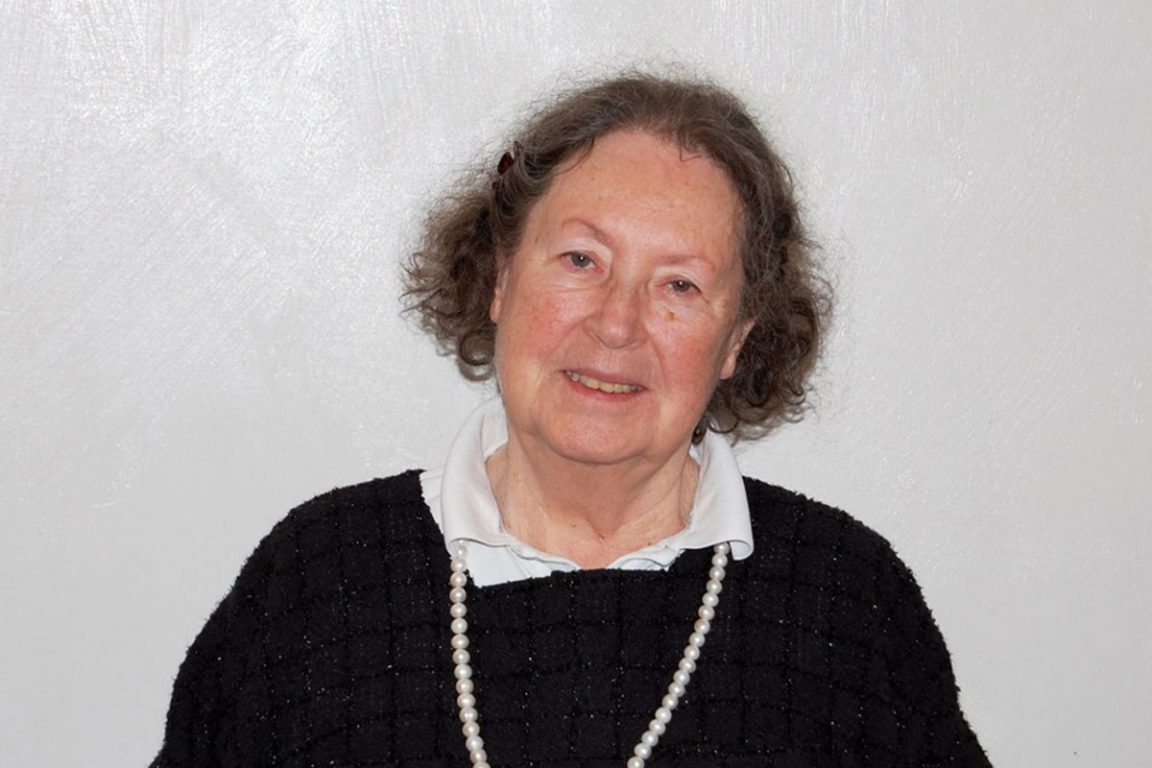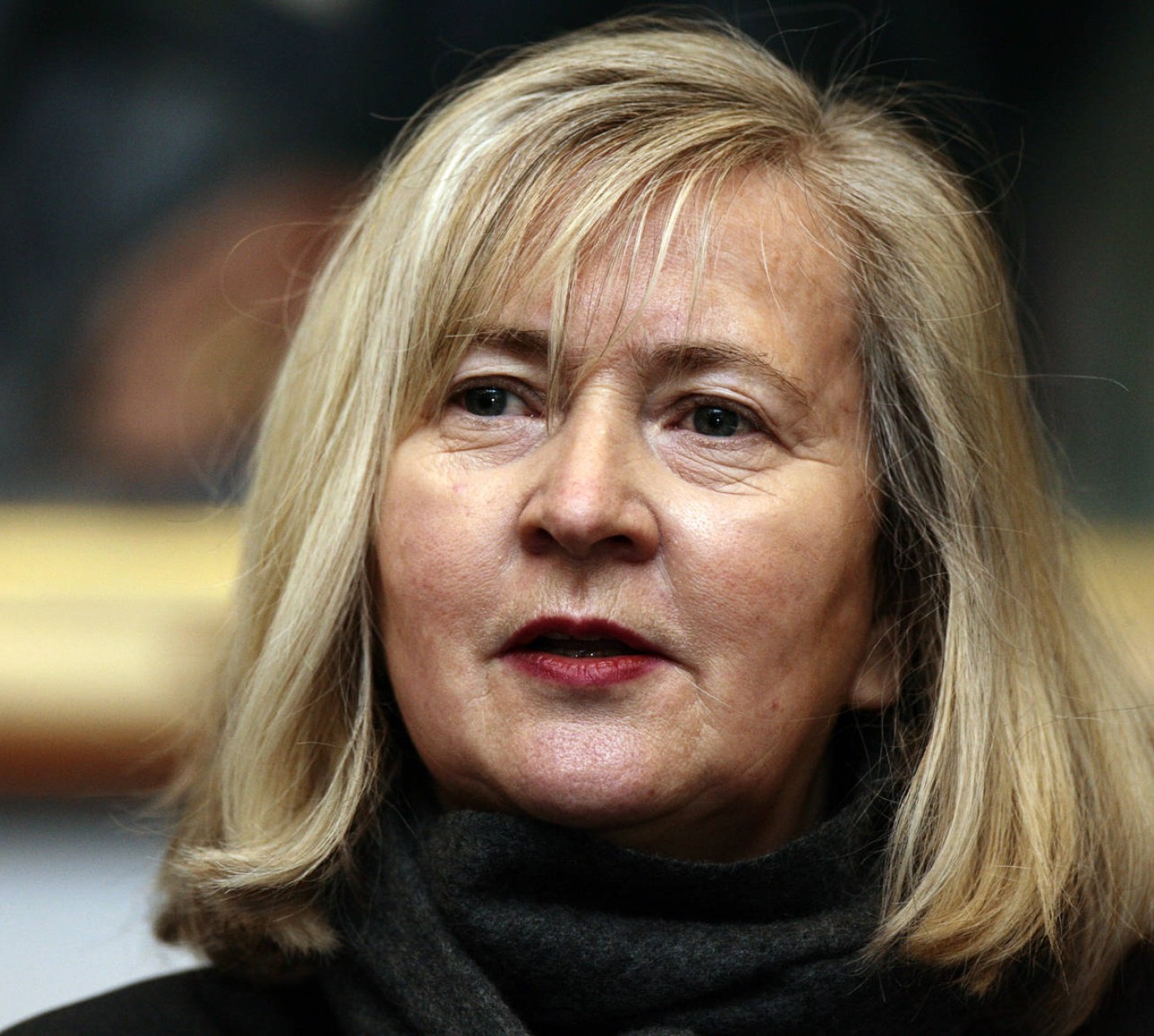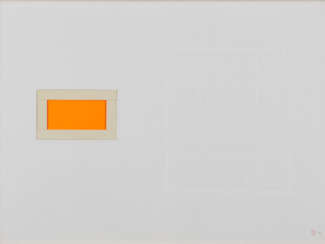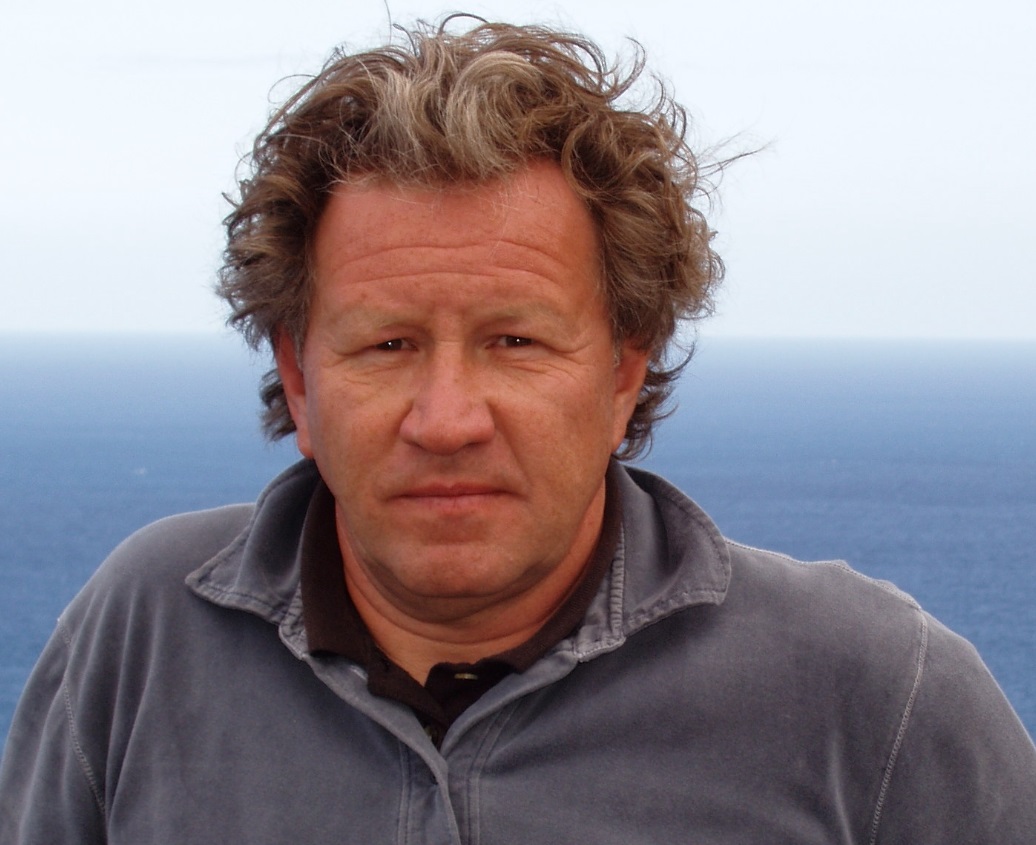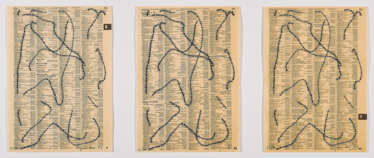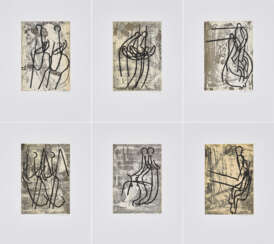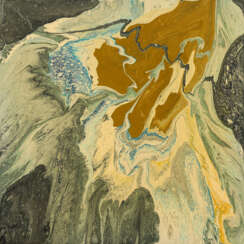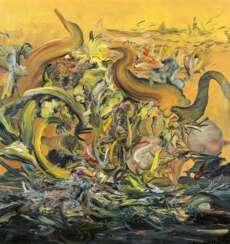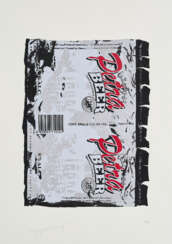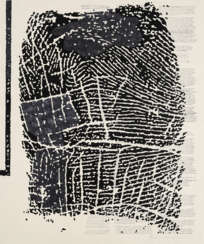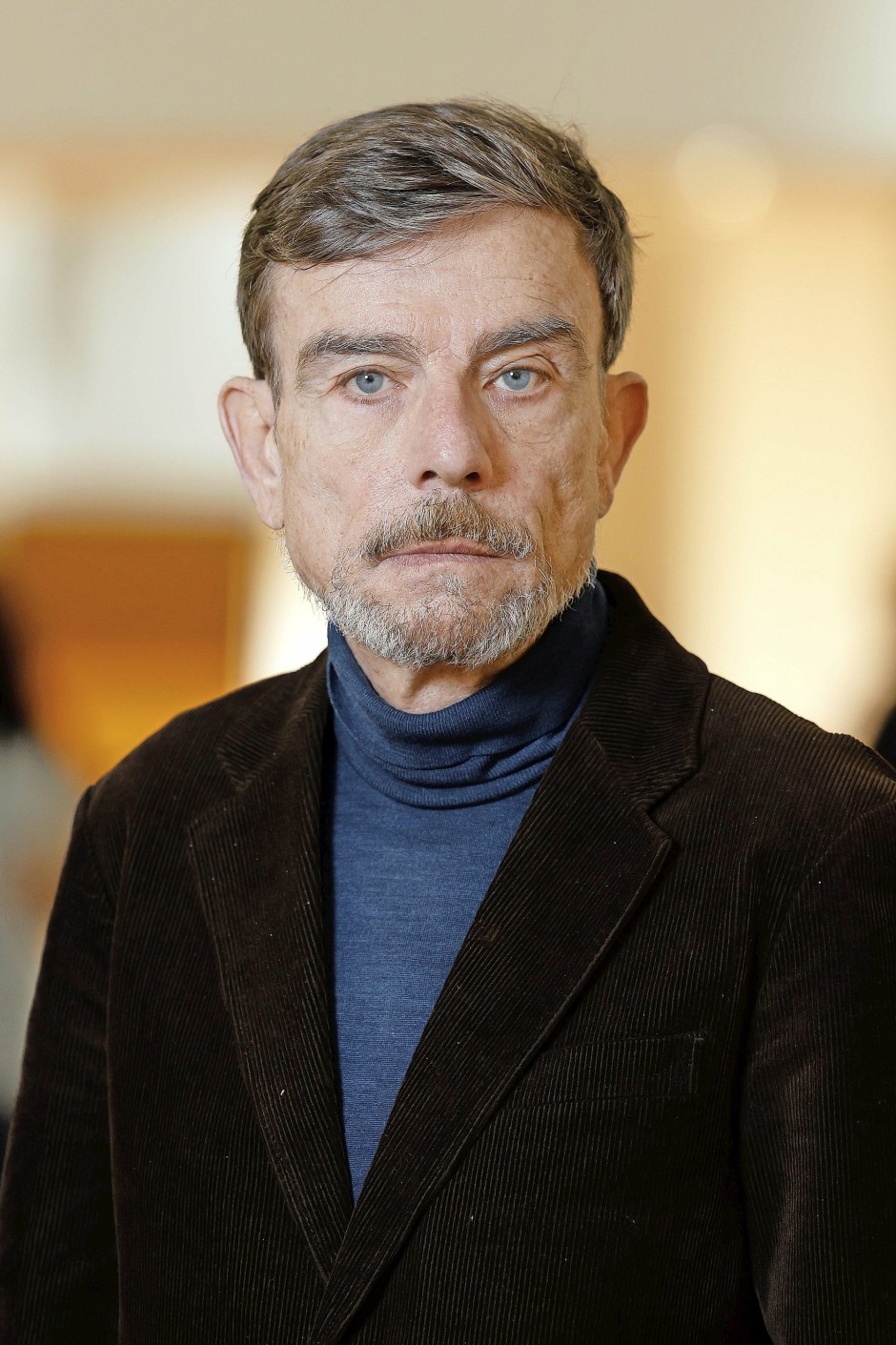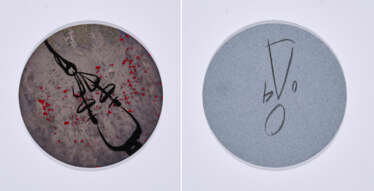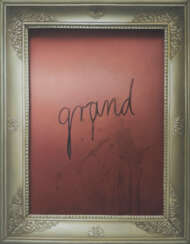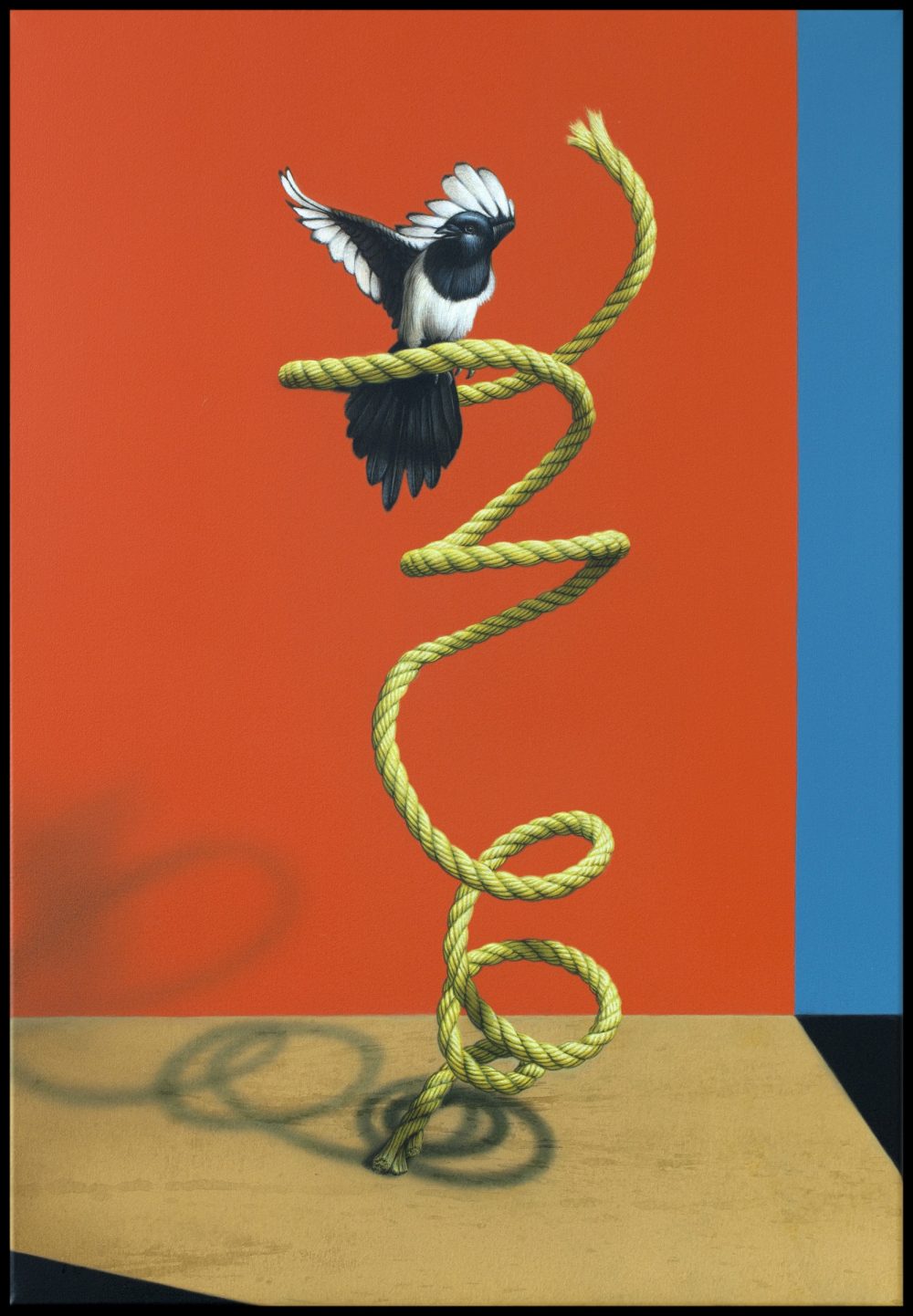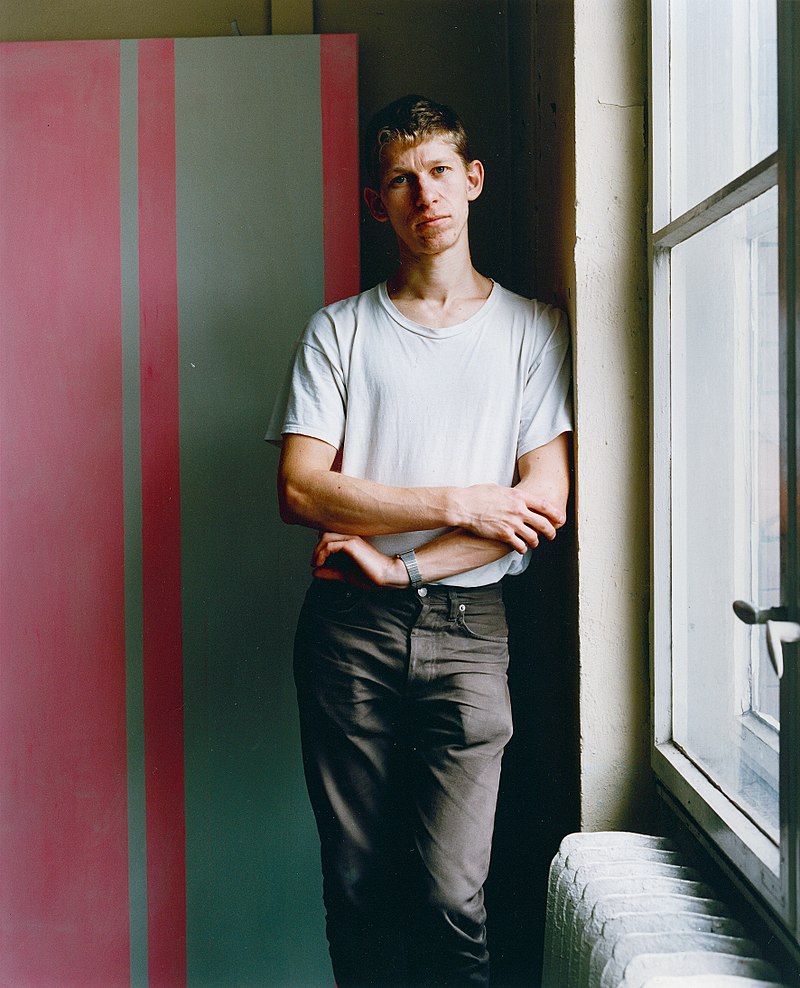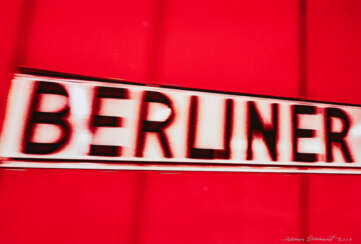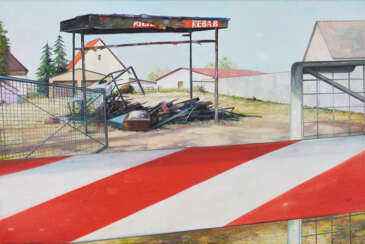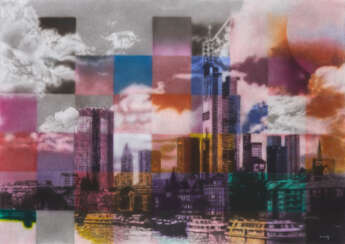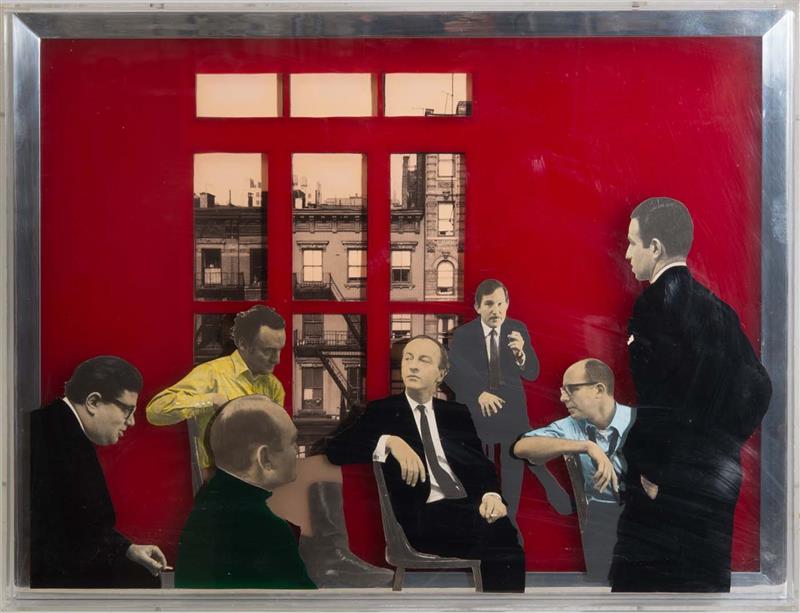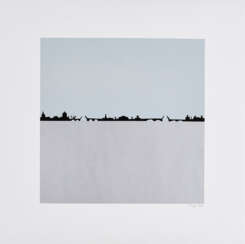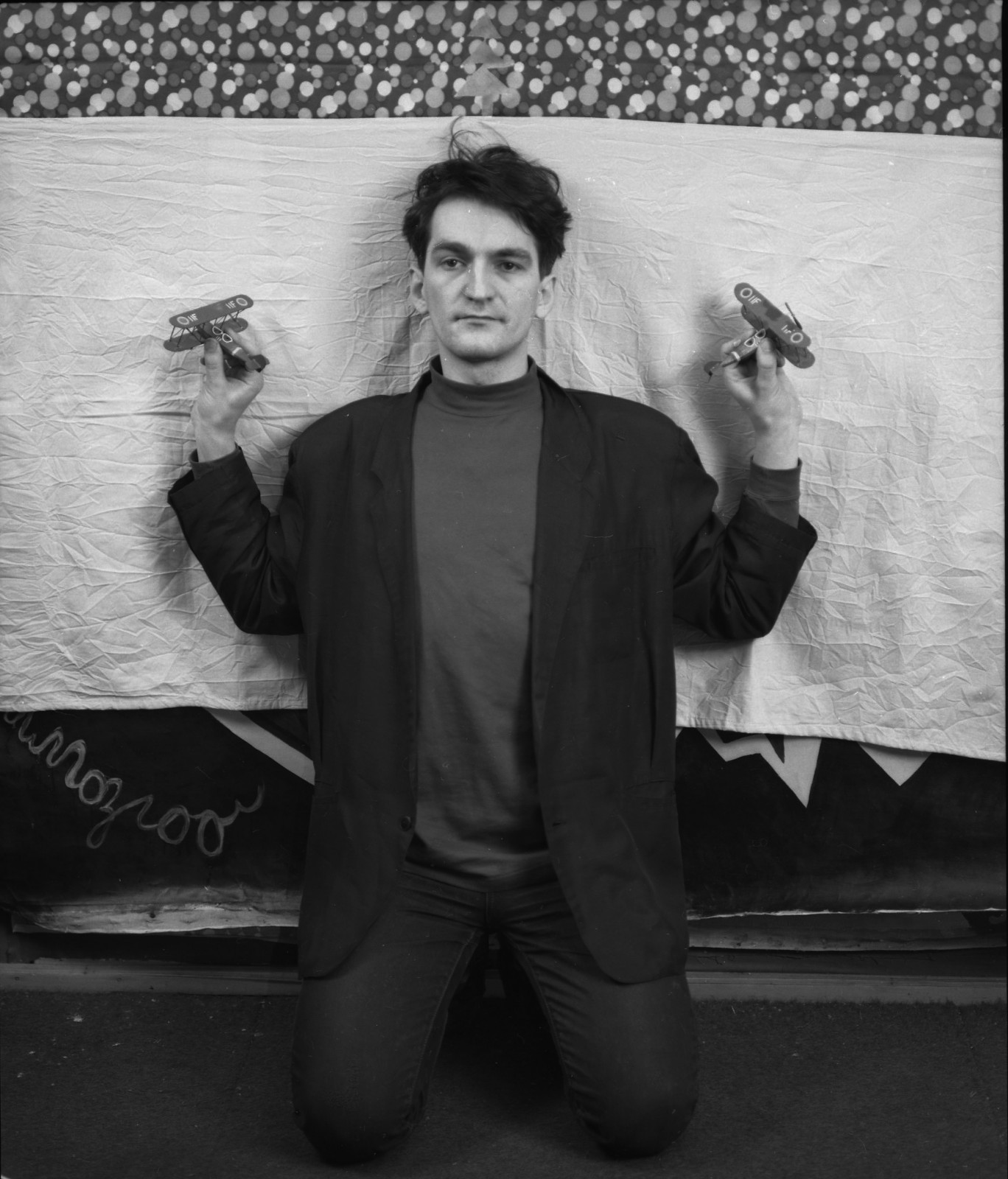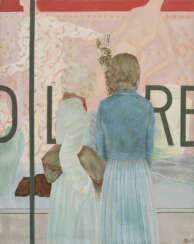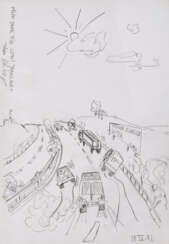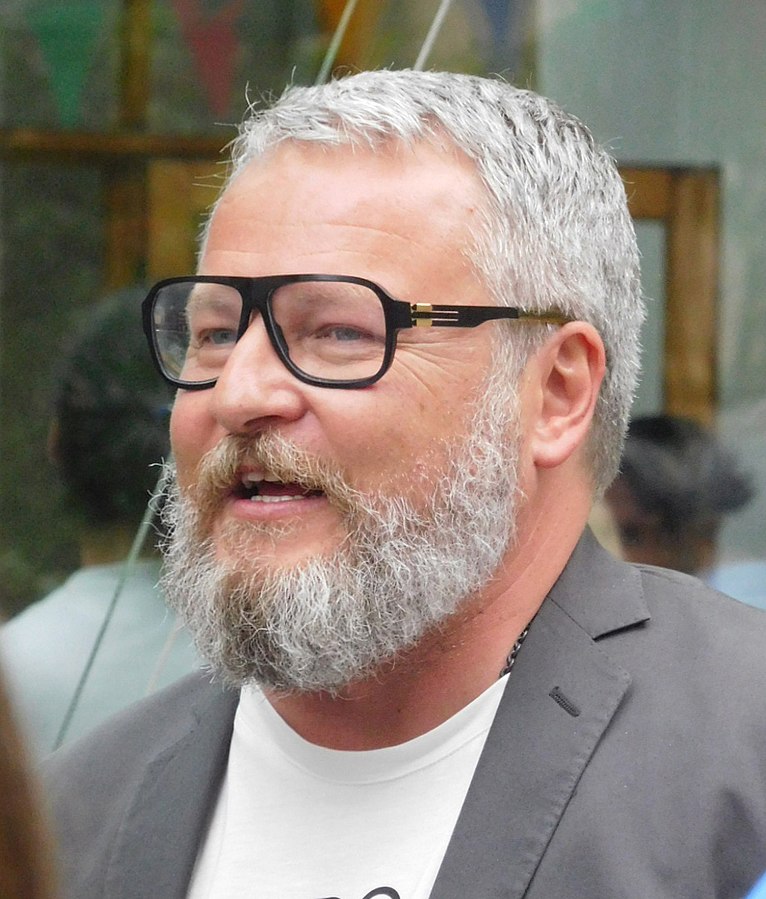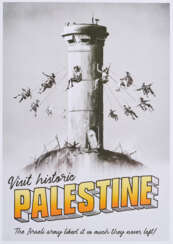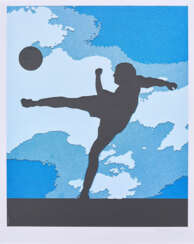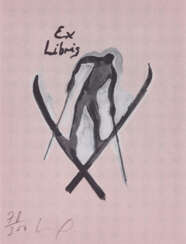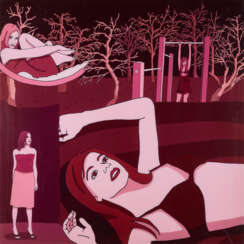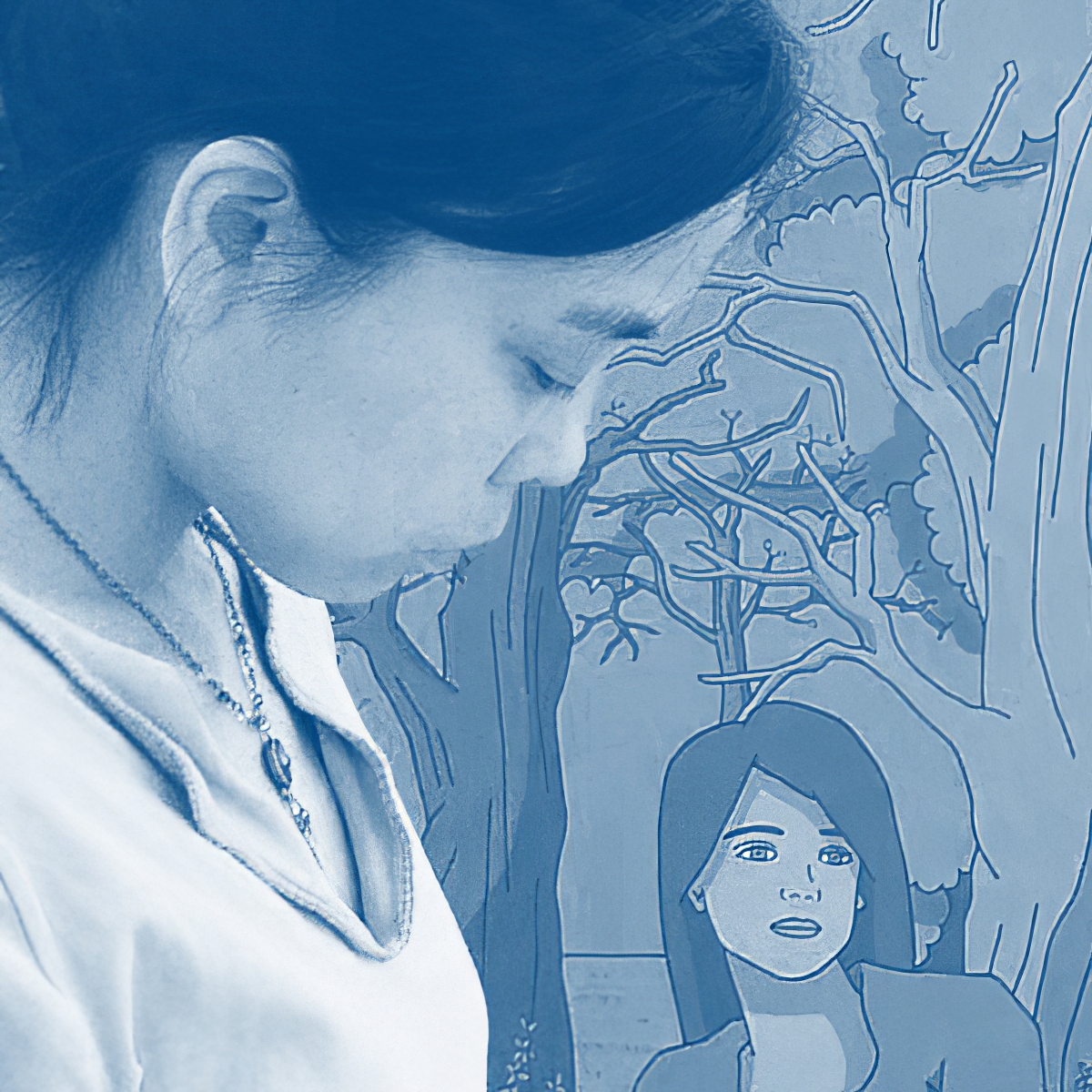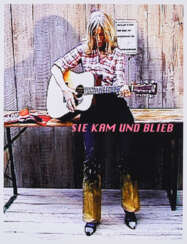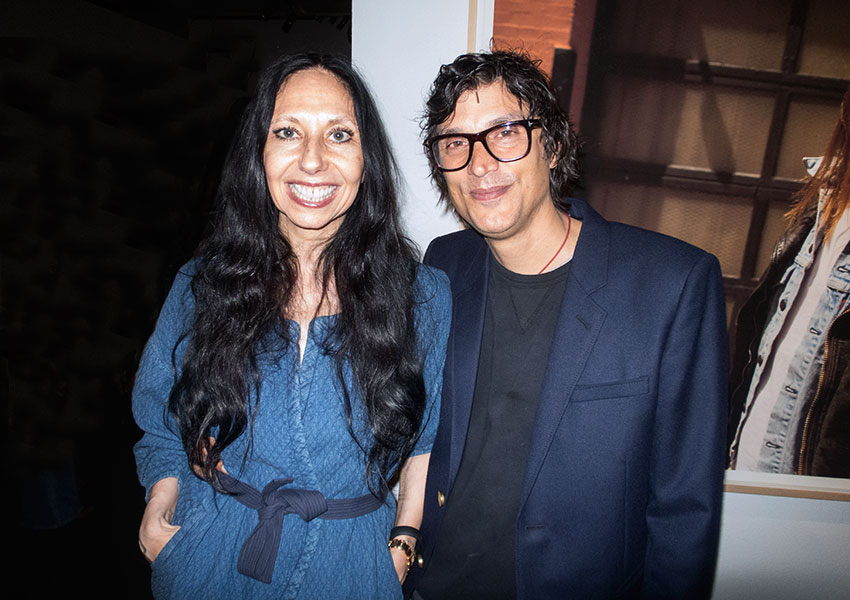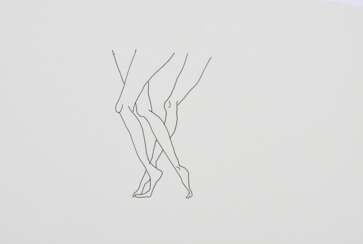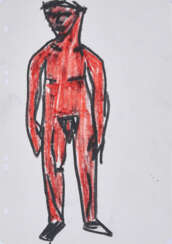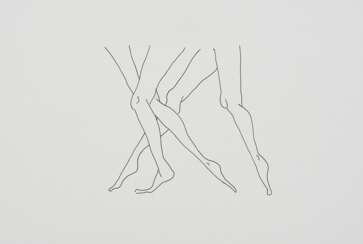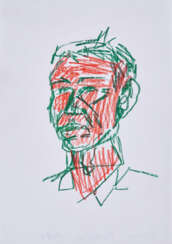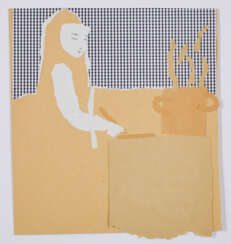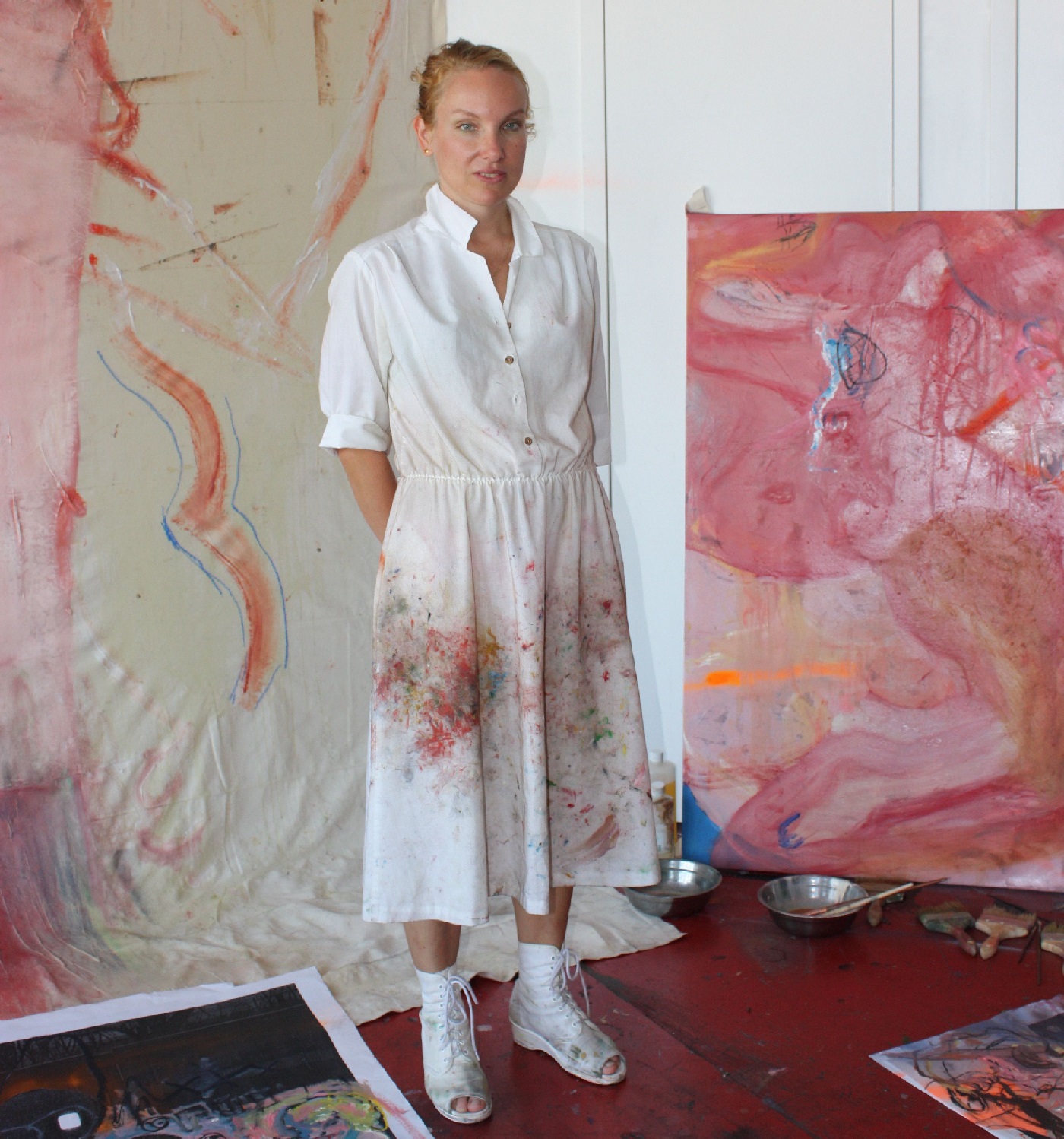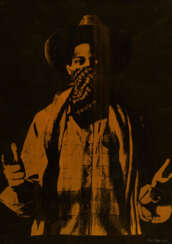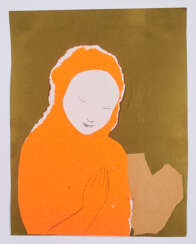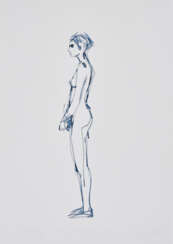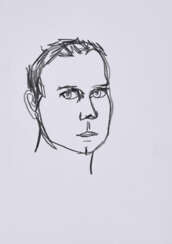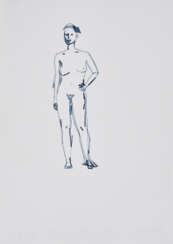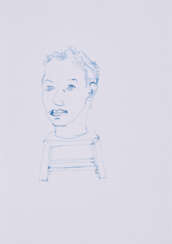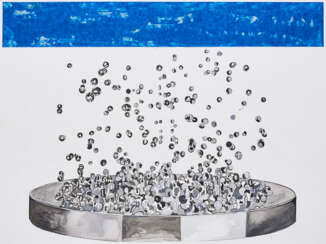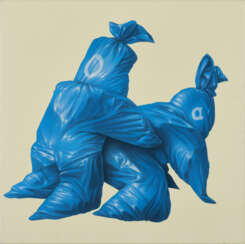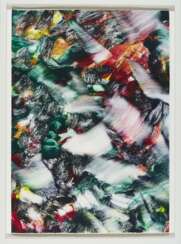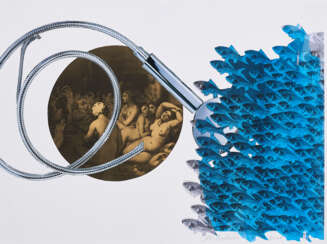
A1119: Contemporary Curated
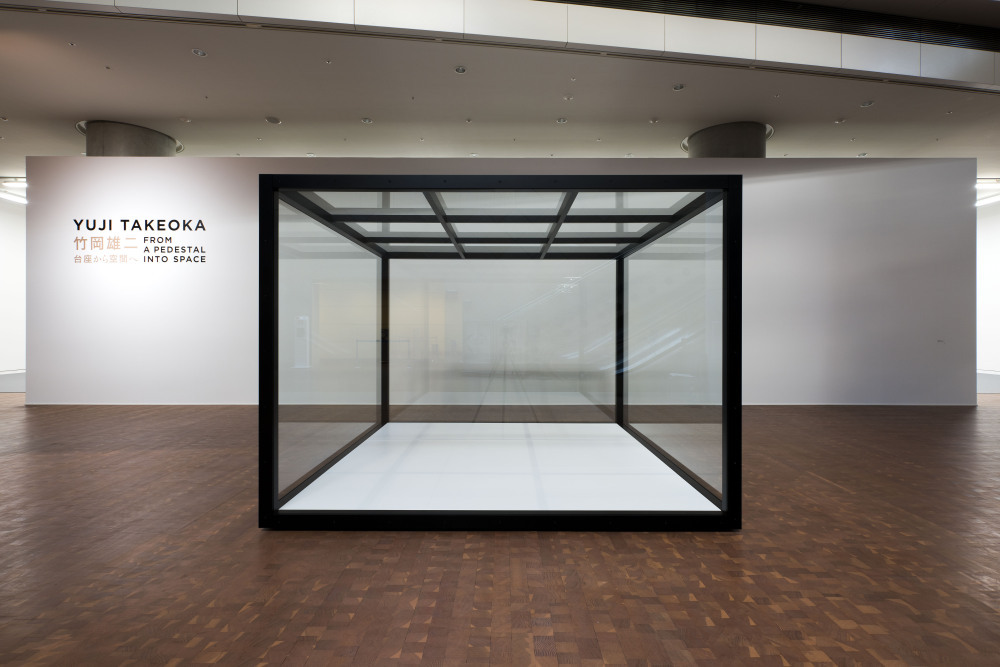
Yuji Takeoka is a Japanese and German sculptor who lives and works in Düsseldorf.
He studied sculpture at Kyoto University of the Arts and at the Academy of Fine Arts Düsseldorf. Known for his "pedestal sculptures," Yuji Takeoka creates elaborate sculptures that emphasize the relationship between the object and the outside world. At the conceptual level of his work, Takeoka creates unique drawings called "Plans.
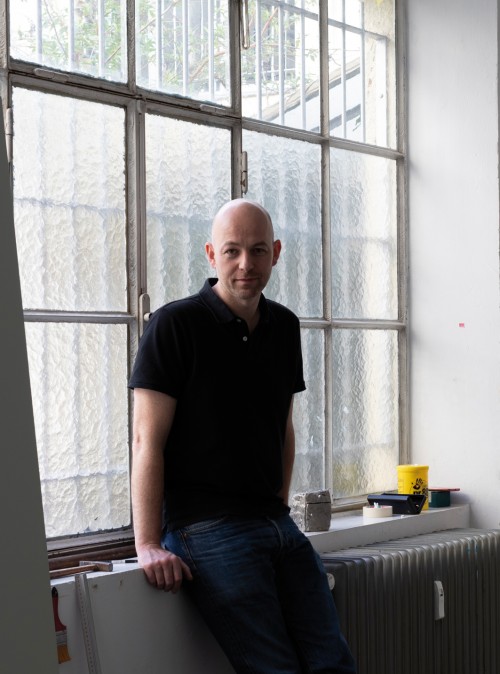
Benjamin Houlihan is a German painter, sculptor, and artist.
He studied at the Düsseldorf Academy of Art, where he is now a teacher. Since 2010, the artist has been transforming inconspicuous everyday objects, changing their material and size, into larger figures with a suggestive aura. In his wall paintings made with cottage cheese and food dyes, which Houlihan applies with his tongue, he also touches on the theme of painting.

Benjamin Houlihan is a German painter, sculptor, and artist.
He studied at the Düsseldorf Academy of Art, where he is now a teacher. Since 2010, the artist has been transforming inconspicuous everyday objects, changing their material and size, into larger figures with a suggestive aura. In his wall paintings made with cottage cheese and food dyes, which Houlihan applies with his tongue, he also touches on the theme of painting.

Damien Hirst is a seminal figure in contemporary art, well-known for his provocative and often controversial works that explore themes of death, rebirth, and the boundaries of art itself. As a leading member of the Young British Artists (YBAs) in the 1990s, Hirst catapulted to fame with his innovative approach to art that combines the techniques of installation, sculpture, and painting.
Damien Hirst's early career was marked by his organization of the pivotal "Freeze" exhibition in 1988, showcasing his and his peers' work, which caught the attention of influential art collectors. This period laid the groundwork for his signature works, including the 'Natural History' series, where animals such as sharks, sheep, and cows are preserved in formaldehyde, challenging viewers to confront the nature of existence and the inevitability of death.
Among Damien Hirst's most iconic pieces is "The Physical Impossibility of Death in the Mind of Someone Living," featuring a tiger shark suspended in formaldehyde, and "For the Love of God," a platinum cast of an 18th-century human skull encrusted with 8,601 flawless diamonds. These works exemplify Hirst's exploration of mortality and the commodification of art.
Damien Hirst's 'Spot Paintings' and 'Spin Paintings' further demonstrate his challenge to traditional notions of authorship and the creative process, often involving teams of assistants in their production. These series play with concepts of randomness, control, and the aesthetic joys of color and form, pushing the boundaries of painting as a medium.
In 2017, Hirst embarked on "Treasures from the Wreck of the Unbelievable," an ambitious project that filled Venetian museums with artifacts from a fictional ancient shipwreck. This project, blending reality and fiction, invited audiences to question the authenticity and value of art, showcasing Hirst's ongoing interest in storytelling and myth-making within the context of contemporary culture.
For collectors and experts in art and antiques, Damien Hirst represents a pivotal figure whose works challenge, provoke, and inspire. His ability to blur the lines between art, science, and commerce has left an indelible mark on the art world, making his pieces highly sought after by collectors around the globe.
Stay updated on Damien Hirst's latest projects, exhibitions, and sales by signing up for dedicated art newsletters. This subscription will ensure you're informed about new opportunities to engage with the work of one of the most influential artists of our time.

Yuji Takeoka is a Japanese and German sculptor who lives and works in Düsseldorf.
He studied sculpture at Kyoto University of the Arts and at the Academy of Fine Arts Düsseldorf. Known for his "pedestal sculptures," Yuji Takeoka creates elaborate sculptures that emphasize the relationship between the object and the outside world. At the conceptual level of his work, Takeoka creates unique drawings called "Plans.
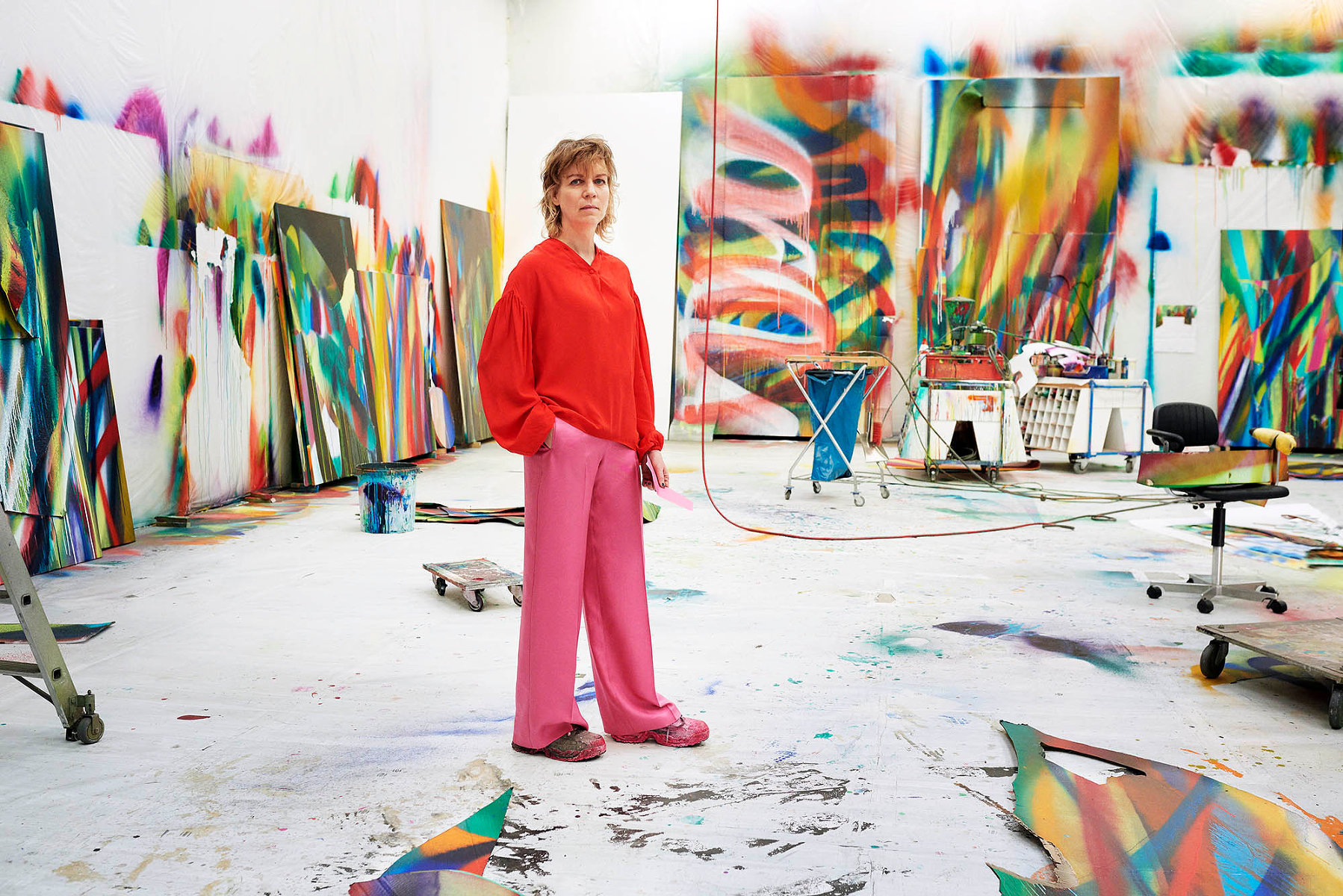
Katharina Grosse is a German artist. As an artist, Grosse's work employs a use of architecture, sculpture and painting. She is known for her large-scale, site-related installations to create immersive visual experiences. She has been using an industrial paint-sprayer to apply prismatic swaths of color to a variety of surfaces since the late 1990s, and often uses bright, unmixed sprayed-on acrylic paints to create both large-scale sculptural elements and smaller wall works.

Yuji Takeoka is a Japanese and German sculptor who lives and works in Düsseldorf.
He studied sculpture at Kyoto University of the Arts and at the Academy of Fine Arts Düsseldorf. Known for his "pedestal sculptures," Yuji Takeoka creates elaborate sculptures that emphasize the relationship between the object and the outside world. At the conceptual level of his work, Takeoka creates unique drawings called "Plans.
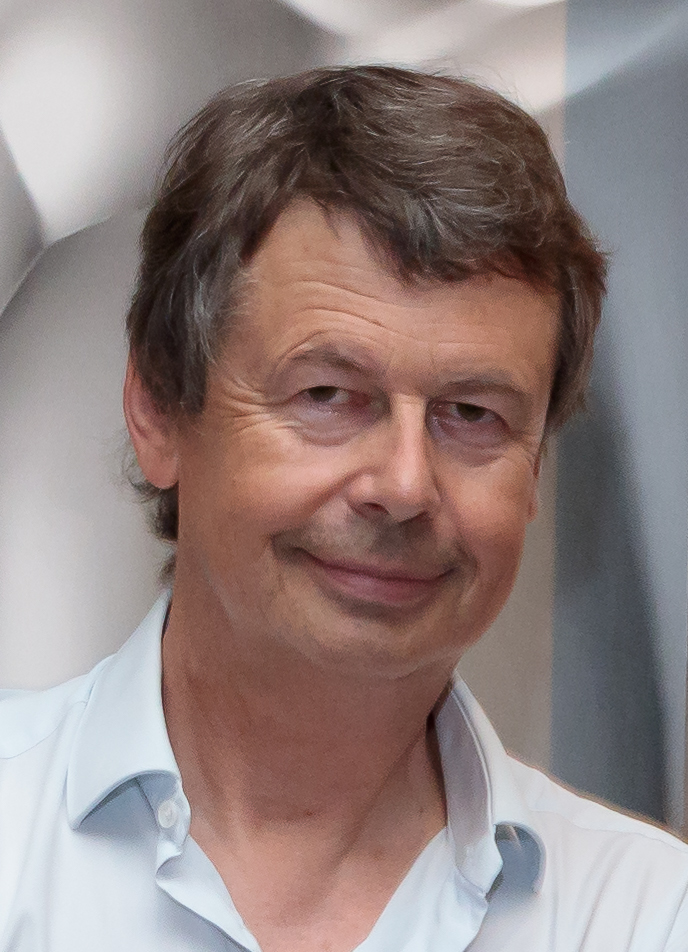
Peter Kogler is an Austrian artist who creates illusionary spaces.
He studied at the Academy of Fine Arts in Vienna and teaches at the Academy of Fine Arts in Munich.
Peter Kogler is a pioneering artist in the field of computer art. Using cutting-edge technology, the artist uses a series of repeating motifs materialized in various forms: two- and three-dimensional prints, sculptures, furniture, wallpaper, lighting fixtures, collages and other installations.
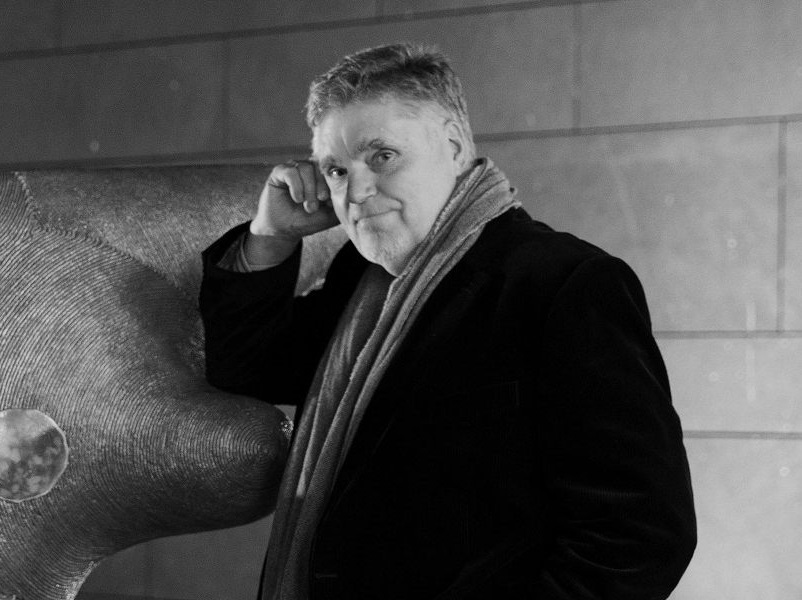
Markus Oehlen is a German artist and musician.
Markus Oehlen graduated from the Düsseldorf Academy of Fine Arts, where his mentor was Alfonso Hüppi. Oehlen was one of the main members of the German "New Wilde" (Neue Wilde) art movement, which flourished in the 1980s and was characterized by the use of punk style elements in opposition to the then prevalent minimalism.
Oelen is constantly refining the technique of his paintings and also working in parallel on sculptures and musical projects. His new works are increasingly influenced by the perceptual experiments of op-art with their interference of printed images, which emerge as lattice patterns from below and above the image layers. Alongside forms oriented towards a computer aesthetic, this brings elements of the avant-garde into his images. By rearranging the individual compositional elements of the canvas, Oelen creates surrealist still lifes, playing with the notion of chance and suggesting bizarre narratives.
Markus Oehlen has been a professor at the Academy of Fine Arts in Munich since 2002.
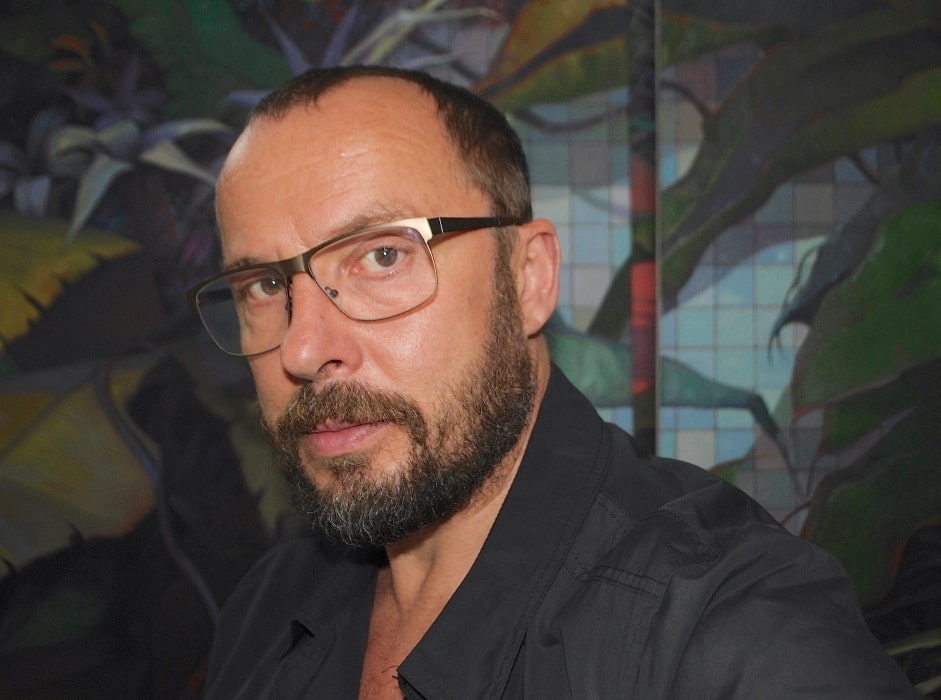
Jens Hausmann, a German painter, is renowned for his distinctive approach to painting, where architecture plays a central role, yet it's not the essence of his work. His paintings explore the nuanced relationship between architectural forms and the natural world, often depicting buildings and landscapes intertwined in a complex dance of culture and nature. Hausmann's work is characterized by a constructivist approach, where the real and the constructed realities blend seamlessly, creating scenarios that challenge the viewer's perception of space and environment.
Jens Hausmann's art is deeply influenced by modernism, yet it critiques its principles by showcasing buildings in emotionally arctic modernism being slowly reclaimed by nature. This juxtaposition reflects a critical view of modernist ideologies, suggesting a reevaluation of our relationship with the built environment and the natural world. His paintings don't just depict scenes; they invite viewers into a contemplative space where the boundaries between the interior and exterior blur, prompting reflections on the human condition and our impact on the planet.
His works are a testament to the complex interplay between humanity and nature, where even the most remote natural landscapes bear the marks of human activity. The artificiality of the colors in his landscapes and the absence of human figures underscore the theme of nature being "culturally contaminated" in the Anthropocene era. Jens Hausmann's paintings are not only visually striking but also intellectually stimulating, inviting viewers to ponder the deeper meanings and implications of his depicted scenarios.
For collectors and experts in art and antiques, Jens Hausmann's work offers a unique blend of architectural precision and philosophical depth, making his paintings highly sought after in both European and Brazilian art scenes. His ability to weave together elements of architecture, nature, and human influence creates a visually and conceptually rich tapestry that speaks to a wide audience.
To stay informed about Jens Hausmann's latest works and exhibitions, signing up for updates is highly recommended. This subscription will ensure that you are among the first to know about new sales and auction events related to his work, providing exclusive insights into the evolving world of contemporary art.
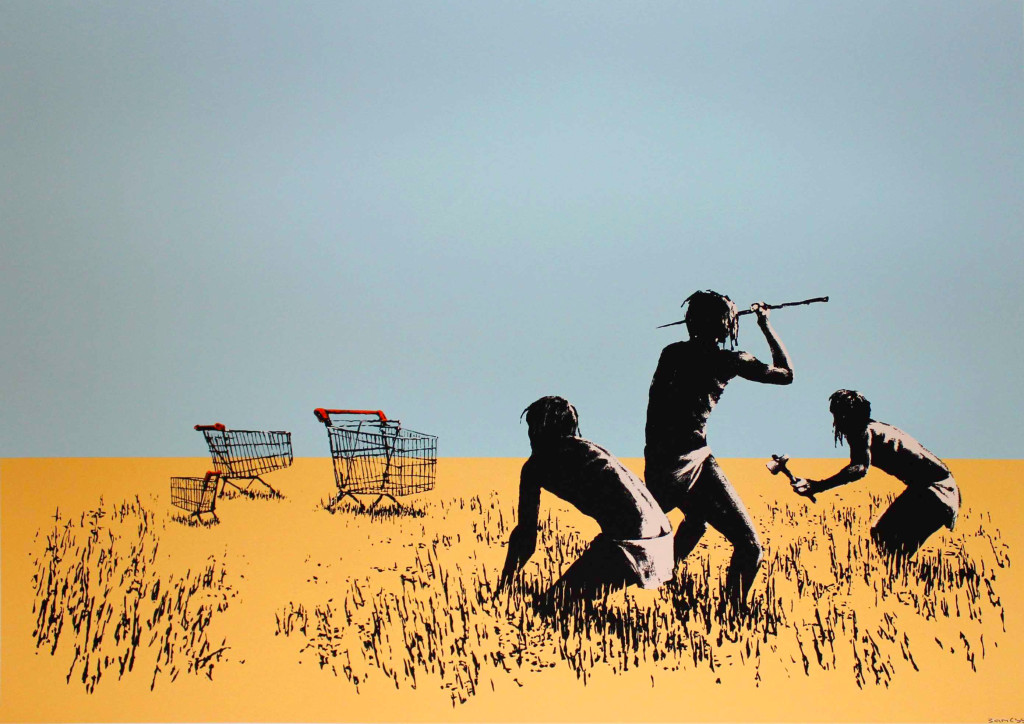
Banksy is a pseudonymous England-based street artist, political activist and film director whose real name and identity remain unconfirmed and the subject of speculation. Active since the 1990s, his satirical street art and subversive epigrams combine dark humour with graffiti executed in a distinctive stenciling technique. His works of political and social commentary have appeared on streets, walls and bridges throughout the world. Banksy's work grew out of the Bristol underground scene, which involved collaborations between artists and musicians. Banksy says that he was inspired by 3D, a graffiti artist and founding member of the musical group Massive Attack.
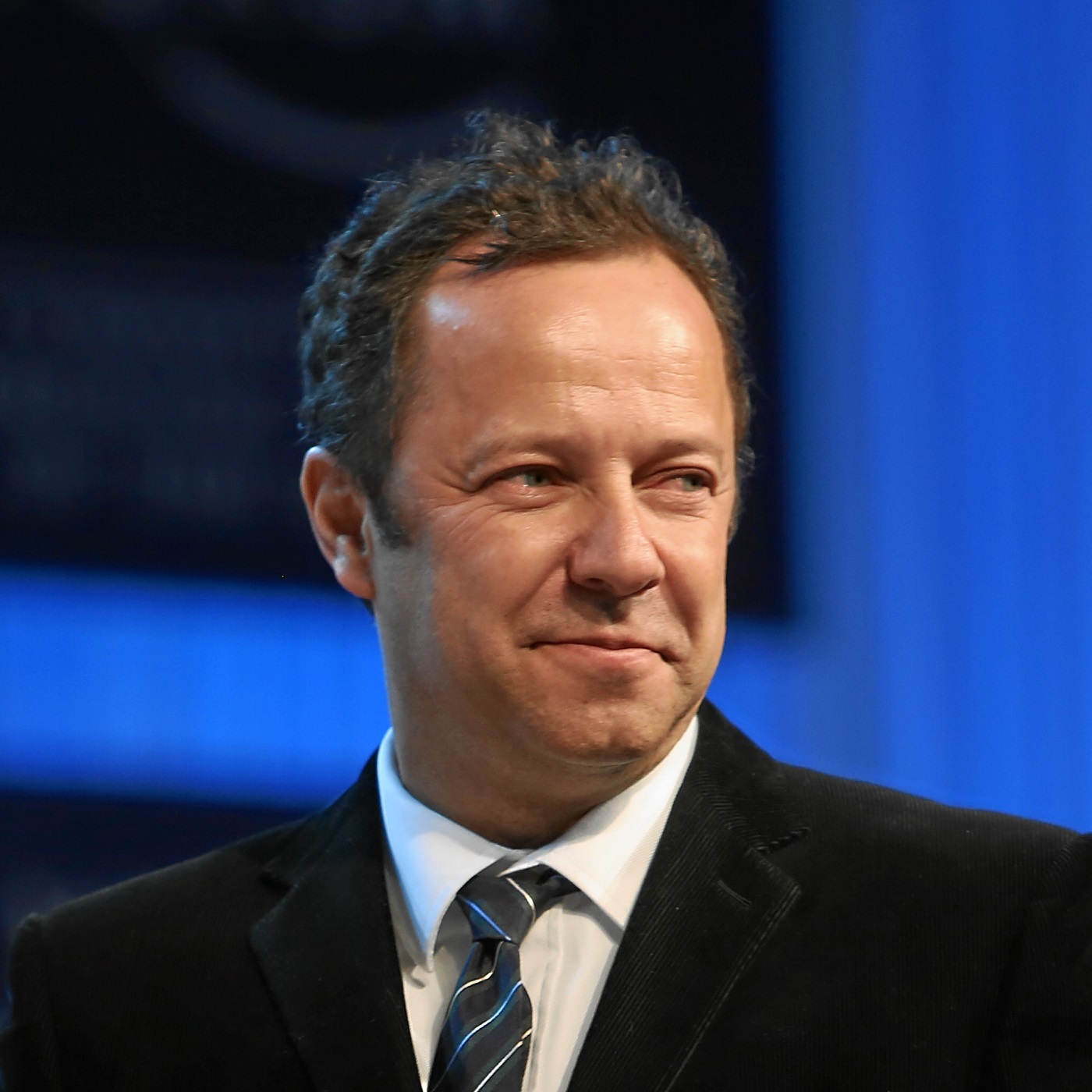
Vik Muniz is a Brazilian artist and photographer. Initially a sculptor, Muniz grew interested with the photographic representations of his work, eventually focusing completely on photography. Primarily working with unconventional materials such as tomato sauce, diamonds, magazine clippings, chocolate syrup, dust, dirt, etc., Muniz creates works of art, referencing old master's paintings and celebrity portraits, among other things, and then photographs them. His work has been met with both commercial success and critical acclaim, and has been exhibited worldwide. He is currently represented by Galeria Nara Roesler based in New York and Brazil.
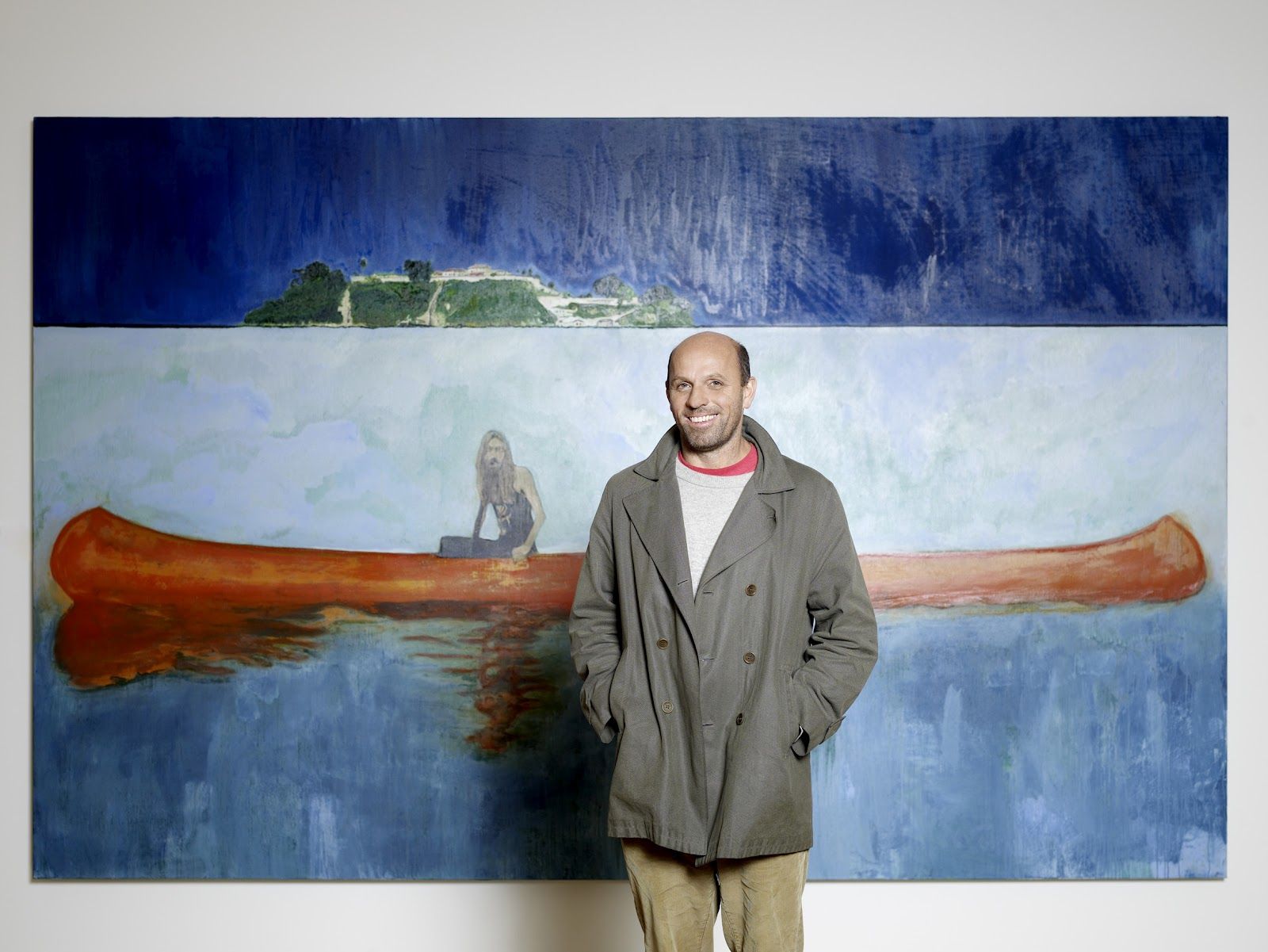
Peter Doig, a Scottish painter, is renowned for his distinct, evocative style that captures elements of the natural world intertwined with a sense of the fantastical. Known for his vibrant use of color and imaginative landscapes, Doig's works often explore themes of memory and nostalgia, heavily influenced by his experiences in Canada, Trinidad, and the United Kingdom.
Peter Doig’s journey in the art world gained significant momentum after his education at Chelsea College of Arts, which was followed by his winning the prestigious Whitechapel Artist Prize in 1991. This recognition led to a solo exhibition at the Whitechapel Art Gallery where he showcased key works that helped define his career, such as "Swamped" and "The Architect's Home in the Ravine."
Throughout his career, Peter Doig has demonstrated a mastery of painting, evident in works like "White Canoe" and "Echo Lake," which reside in major collections such as the Tate and the Saatchi Collection. His art not only reflects his personal history and travels but also incorporates elements from cinema and photography, giving his paintings a dream-like quality that invites viewers to interpret their narratives.
Peter Doig's work has been exhibited worldwide, including significant retrospectives at the Fondation Beyeler in Basel and the Louisiana Museum of Modern Art in Denmark. His achievements in the art world have been recognized with numerous awards, including being named the 2017 Whitechapel Gallery Art Icon.
For those interested in the contemporary art scene, Peter Doig remains a pivotal figure whose works continue to inspire and provoke deep reflection. Art collectors and enthusiasts keen on following updates related to new sales and auction events featuring Doig’s work can sign up for targeted updates here.

Stephan Balkenhol is a German artist known for his sculptures capturing the human form. Based in France and Germany, he specializes in wood sculptures, reliefs, drawings, and graphic techniques like lithography, woodcuts, and stencils. His distinct style features roughly carved and vibrantly painted wooden sculptures, often depicting people, animals, and architecture.
Balkenhol's subjects lack emotions, often gazing into emptiness, resulting in a distant and enigmatic aura. Wood is his primary medium, with softer woods allowing precise facial details while maintaining imperfections like chips, knots, and tool marks. The artist adds paint as a finishing touch, accentuating anatomy and vitality. The textured surfaces beneath the paint layer amplify the sense of life in Balkenhol's works.

Stephan Balkenhol is a German artist known for his sculptures capturing the human form. Based in France and Germany, he specializes in wood sculptures, reliefs, drawings, and graphic techniques like lithography, woodcuts, and stencils. His distinct style features roughly carved and vibrantly painted wooden sculptures, often depicting people, animals, and architecture.
Balkenhol's subjects lack emotions, often gazing into emptiness, resulting in a distant and enigmatic aura. Wood is his primary medium, with softer woods allowing precise facial details while maintaining imperfections like chips, knots, and tool marks. The artist adds paint as a finishing touch, accentuating anatomy and vitality. The textured surfaces beneath the paint layer amplify the sense of life in Balkenhol's works.

Stephan Balkenhol is a German artist known for his sculptures capturing the human form. Based in France and Germany, he specializes in wood sculptures, reliefs, drawings, and graphic techniques like lithography, woodcuts, and stencils. His distinct style features roughly carved and vibrantly painted wooden sculptures, often depicting people, animals, and architecture.
Balkenhol's subjects lack emotions, often gazing into emptiness, resulting in a distant and enigmatic aura. Wood is his primary medium, with softer woods allowing precise facial details while maintaining imperfections like chips, knots, and tool marks. The artist adds paint as a finishing touch, accentuating anatomy and vitality. The textured surfaces beneath the paint layer amplify the sense of life in Balkenhol's works.

Stephan Balkenhol is a German artist known for his sculptures capturing the human form. Based in France and Germany, he specializes in wood sculptures, reliefs, drawings, and graphic techniques like lithography, woodcuts, and stencils. His distinct style features roughly carved and vibrantly painted wooden sculptures, often depicting people, animals, and architecture.
Balkenhol's subjects lack emotions, often gazing into emptiness, resulting in a distant and enigmatic aura. Wood is his primary medium, with softer woods allowing precise facial details while maintaining imperfections like chips, knots, and tool marks. The artist adds paint as a finishing touch, accentuating anatomy and vitality. The textured surfaces beneath the paint layer amplify the sense of life in Balkenhol's works.

Stephan Balkenhol is a German artist known for his sculptures capturing the human form. Based in France and Germany, he specializes in wood sculptures, reliefs, drawings, and graphic techniques like lithography, woodcuts, and stencils. His distinct style features roughly carved and vibrantly painted wooden sculptures, often depicting people, animals, and architecture.
Balkenhol's subjects lack emotions, often gazing into emptiness, resulting in a distant and enigmatic aura. Wood is his primary medium, with softer woods allowing precise facial details while maintaining imperfections like chips, knots, and tool marks. The artist adds paint as a finishing touch, accentuating anatomy and vitality. The textured surfaces beneath the paint layer amplify the sense of life in Balkenhol's works.

Stephan Balkenhol is a German artist known for his sculptures capturing the human form. Based in France and Germany, he specializes in wood sculptures, reliefs, drawings, and graphic techniques like lithography, woodcuts, and stencils. His distinct style features roughly carved and vibrantly painted wooden sculptures, often depicting people, animals, and architecture.
Balkenhol's subjects lack emotions, often gazing into emptiness, resulting in a distant and enigmatic aura. Wood is his primary medium, with softer woods allowing precise facial details while maintaining imperfections like chips, knots, and tool marks. The artist adds paint as a finishing touch, accentuating anatomy and vitality. The textured surfaces beneath the paint layer amplify the sense of life in Balkenhol's works.

Herbert Brandl is one of the most famous Austrian expressionist artists. He achieved success through his large-format works.
Landscape as a theme was always dominant in his work, where pictorial abstraction and subjectivity alternate. Since the beginning of the new millennium, Brandl's passion for the monumentality of mountain landscapes has become increasingly evident. Using various formats and techniques, the artist has reinterpreted the theme of mountains, playing with expressive gestures, abstract colour spaces and massive forms.


